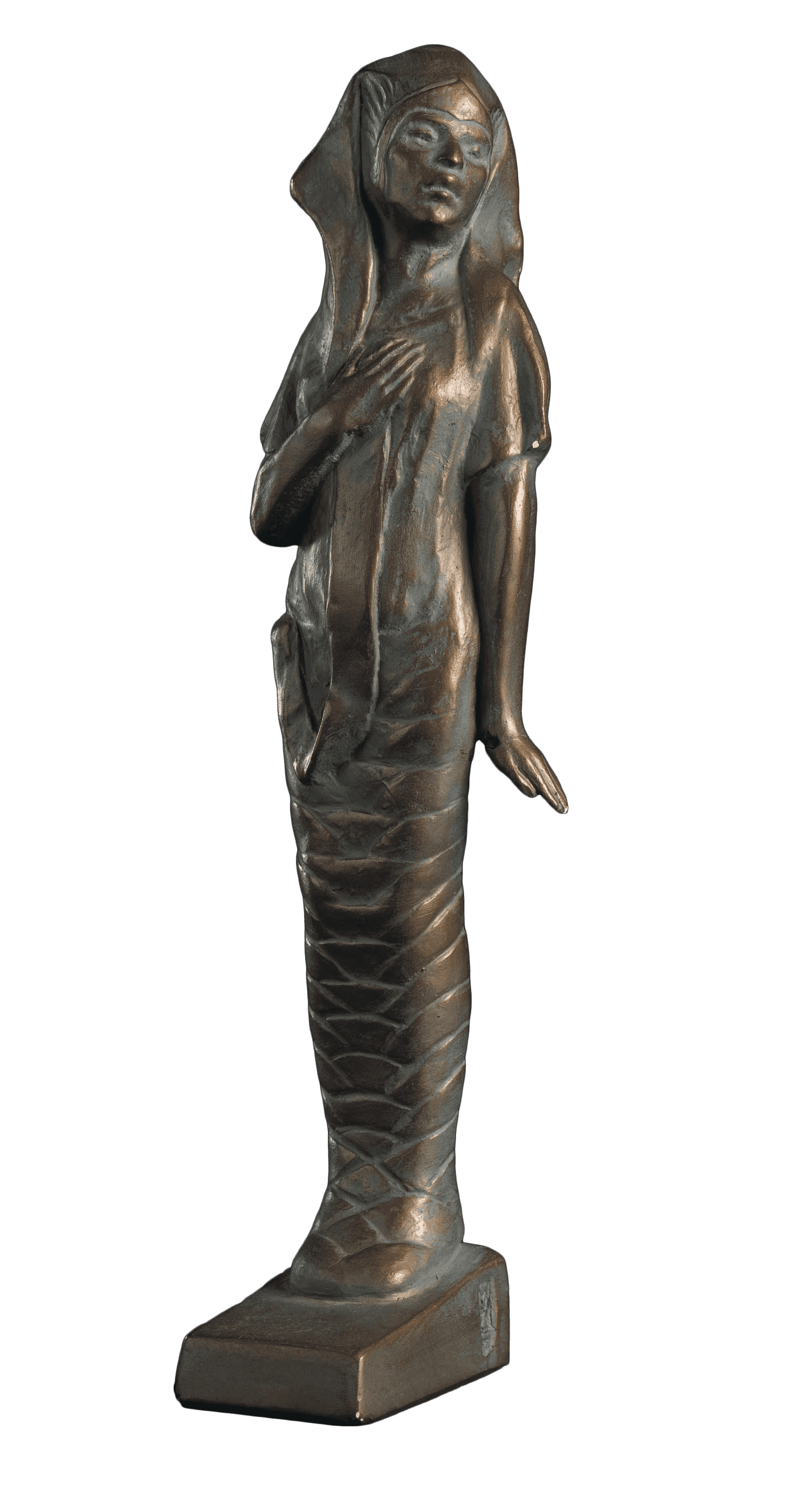Defiance
Defiance is a part of protest. To protest injustice, people have to defy the status quo. Black artists, and especially Black women artists, defy expectations by expressing themselves in ways that others don’t expect. The Black women artists featured here not only defied expectations placed on themselves, but used their craft to honor other defiant women. Protesters, activists, and everyday women fighting for a better life have been memorialized by artists who recognize the power in defiance.
I wanted to show the history and strength of all kinds of Black women. Working women, country women, great women in the history of the United States.
Elizabeth Catlett
The Black Woman by Elizabeth Catlett
Elizabeth Catlett was a sculptor and printmaker whose art celebrated women, family, community, and equality. In 1946, she received a grant to study in Mexico City, where she worked with a printmaking collective that made social and political art. While in Mexico, she completed The Negro Woman series (now retitled The Black Woman). Catlett’s intimate portraits show Black women’s resilience during the long struggle for racial justice. She is one of the many Black women artists who used their creative practice to advance freedom.
Featured Constellation
Meta Vaux Warrick Fuller’s Ethiopia
Meta Vaux Warrick Fuller’s sculpture Ethiopia has a modernist design that references powerful, ancient African civilizations. Connecting African Americans to their heritage across the African continent has been a way for artists to defy claims that Black people are lesser than.

Somebody must show that the Afro-American race is more sinned against than sinning, and it seems to have fallen upon me to do so.
Ida B. Wells
Seeing Black Suffering
In her 1892 publication Southern Horrors: Lynch Law in All Its Phases, civil rights activist Ida B. Wells described sexual and mob violence against Black women in the South. Between 1880 and 1930, more than 130 African American women were murdered by lynch mobs; countless others were sexually assaulted. Although Wells’s organization and other Black women’s groups fought to obtain justice, the sheer number of Black women who were victimized and killed through mob violence was often underestimated compared to male victims.
Continuing the tradition of confronting such horrors, Mildred Thompson’s Untitled (Lynching of a Woman) portrays the lynching of a nude, Black woman by Ku Klux Klan members. Thompson is best known for her later colorful, abstract work, making this earlier drawing even more striking. By refusing to turn from such violence, artists like Thompson insist that certain American truths be known.
Untitled (Lynching of a Woman). Mildred Jean Thompson, 1963.
Documenting Injustice
Deborah Roberts and Lava Thomas capture Black humanity in the midst of injustice.
Roberts created 80 days in honor of George Stinney Jr., a 14-year-old boy who became the youngest person executed in a U.S. prison. In the span of 80 days in 1944, Stinney was arrested, tried, and executed for allegedly killing two white girls. Seventy years later, in 2014, Stinney’s conviction was vacated after it was determined that he did not receive a fair trial.
Euretta F. Adair was one of more than 80 African American activists arrested for planning and participating in the Montgomery Bus Boycott. Lava Thomas’s Mugshot Portraits: Women of the Montgomery Bus Boycott series portrays Adair and other Black female activists. Drawn from actual mugshots, Thomas’s portraits celebrate the commitment, bravery, and sacrifice of African American women.
80 days. Deborah Roberts, 2018; gold fingernails added 2022.
Euretta F. Adair. Lava Thomas, 2018.